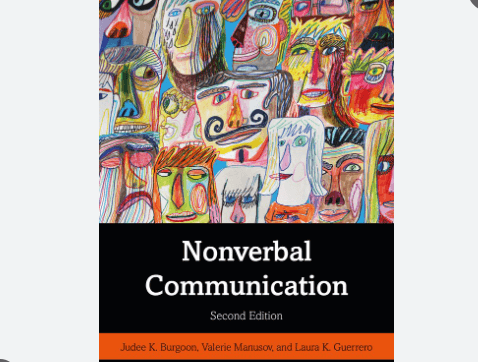Resolving Organizational Conflict

- Credit | Trainers Library
Factors Causing Conflict in Organizational Settings
Conflict resolution can take various forms, yet achieving genuine resolution, where the root causes of dysfunctional conflict are eradicated, proves challenging. When conflicts linger without proper resolution, they frequently pave the way for subsequent conflicts of similar or interconnected nature.
Instead of attempting to ignore conflict or opting for a temporary solution, the optimal approach involves addressing significant conflicts in a manner that leads to their comprehensive resolution. This necessitates a thorough comprehension of the stages of conflict, the potential triggers, and both direct and indirect methods of conflict management.
Stages of Conflict & Their Antecedents
Conflicts typically evolve through distinct stages, as illustrated in the figure below. Conflict antecedents set the groundwork for conditions that are prone to give rise to conflicts. When these antecedent conditions lead to substantive or emotional disparities between individuals or groups, the stage of perceived conflict comes into existence.

A notable distinction exists between perceived and felt conflict. Perceived conflict occurs when there is an awareness of the discord, while felt conflict is experienced as tension, compelling individuals to take action to alleviate the discomfort. Successful conflict resolution hinges on all parties not only recognizing the conflict but also feeling compelled to address and resolve it.
Manifest conflict is overtly expressed through behavior. At this stage, addressing or rectifying the antecedents leads to conflict resolution, while neglecting to do so results in conflict suppression.
In the case of suppression, there is no alteration in the antecedent conditions even though the observable conflict behaviors may be momentarily restrained. This occurs when one or both parties opt to overlook the conflict in their interactions.
Conflict suppression represents a surface-level and often fleeting condition, leaving the situation susceptible to future conflicts on similar issues. While it may offer short-term relief, only genuine conflict resolution establishes conditions that eliminate an existing conflict and diminish the likelihood of its recurrence in the future.
Hierarchical Causes of Conflict in Organization
The hierarchical structure of organizations inherently leads to the inevitability of conflict, given that individuals and teams are designed to collaborate within this framework. In such an environment, the occurrence of conflict is a well-acknowledged reality.
The ensuing are types of conflict that manifest in organizations due to their hierarchical settings:
Vertical conflict
Vertical conflict manifests between different hierarchical levels within an organization and often involves disputes between supervisors and subordinates, as well as team leaders and team members. These disagreements typically revolve around issues such as resource allocation, goal setting, deadlines, or the assessment of performance results.
Horizontal conflict
Horizontal conflict arises among individuals or groups operating at the same hierarchical level within an organization. These conflicts often stem from goal incompatibilities, shortages of resources, or interpersonal factors. Disputes at this level are characterized by conflicts between peers or colleagues who share similar organizational status.
Line-staff conflict
Line-staff conflict occurs when disagreements arise between personnel in the line roles (involved in the core activities of the organization) and staff roles (support functions) over issues related to authority and control. These conflicts often center around decisions concerning budgets, technology, and human resource practices. Line-staff conflicts can emerge due to differences in perspectives on how responsibilities and decision-making authority should be distributed between these two functional areas within the organization.
Role ambiguity conflict
Role ambiguity conflicts are prevalent in organizational environments, arising when there is uncertainty or disruption in the communication of task expectations. This may occur when a team member receives conflicting or unclear expectations from different sources, such as the leader and other team members. Conflict tends to emerge when individuals find themselves in ambiguous situations where it is challenging to discern responsibilities and reasons for certain expectations, leading to uncertainty about who is responsible for what.
Contextual Causes of Conflict in Organizations
The context of the organization as a complex network of interacting subsystems, provides a fertile ground for various conflicts, including the following:
Task interdependency
Conflicts and open disagreements can arise due to task and workflow interdependencies among individuals and teams working together to achieve challenging goals. The potential for conflict is particularly significant when interdependence is high, meaning that a person or group is heavily reliant on, or needs contributions from, one or more others to accomplish its goals. High levels of interdependence increase the likelihood of disputes as individuals and teams navigate the complexities of working together toward common objectives.
Structural differentiation
Conflict escalation can occur due to structural differentiation, a situation where various teams and work units within an organization pursue different goals with different time horizons. When there is a lack of alignment in objectives and timelines among different units, it can lead to increased tension and conflicts within the organization. Structural differentiation introduces complexity and divergence in the organizational landscape, creating fertile ground for conflicts to escalate as teams navigate diverse goals and timelines.
Domain ambiguities
Conflict can arise from domain ambiguities when individuals or teams experience a lack of clear task direction or goals. Misunderstandings related to factors like customer jurisdiction or the scope of authority can contribute to this ambiguity. When there is uncertainty about responsibilities or boundaries, it creates a breeding ground for conflict as individuals or teams may not have a clear understanding of their roles and the parameters within which they operate. Clarity in task direction and goals is crucial to mitigating conflicts stemming from domain ambiguities.
Resource scarcity
Actual or perceived resource scarcity can give rise to destructive conflict within an organization. When individuals or teams believe that resources are limited, working relationships may be strained as they seek to secure or maintain the maximum share of the available resources. In such situations, there is a tendency for resistance to arise against the redistribution of resources to others. This competitive dynamic can lead to destructive conflicts as different entities within the organization vie for a larger piece of the resource pie, potentially undermining collaboration and cooperation.
Asymmetry
Power or value asymmetries in work relationships can indeed fuel conflict, especially when there are substantial differences in status, influence, or values among interdependent individuals or teams. Conflicts arising from asymmetry may manifest when a person with low power requires assistance from someone with high power who does not respond, when individuals with markedly different values are compelled to collaborate on a task, or when a person of high status is obligated to interact with and, potentially, be dependent on someone of lower status. In the subsequent entry, we will delve into indirect and direct conflict management strategiesOpens in new window.
























